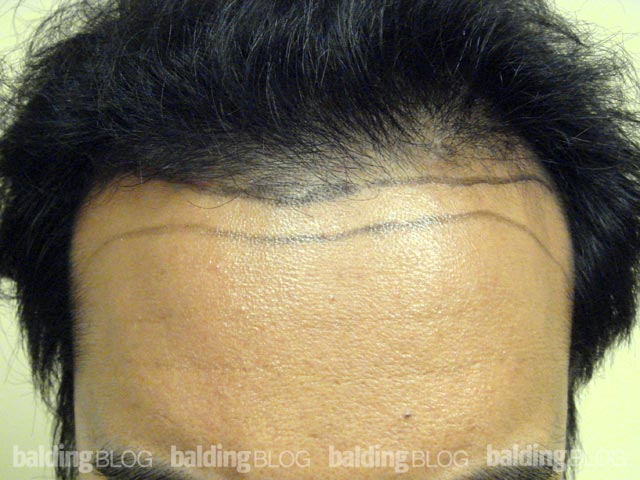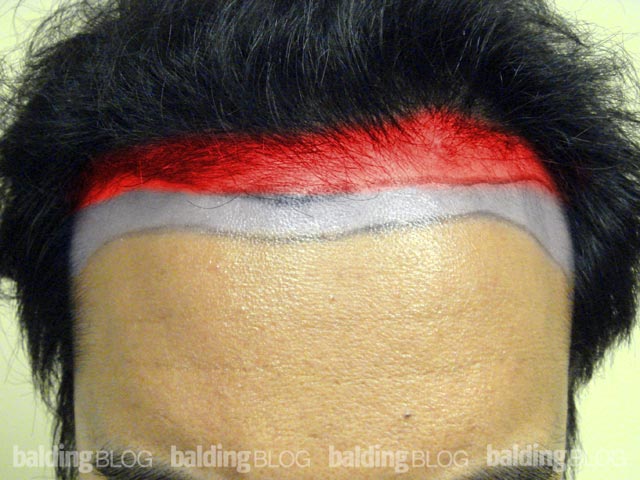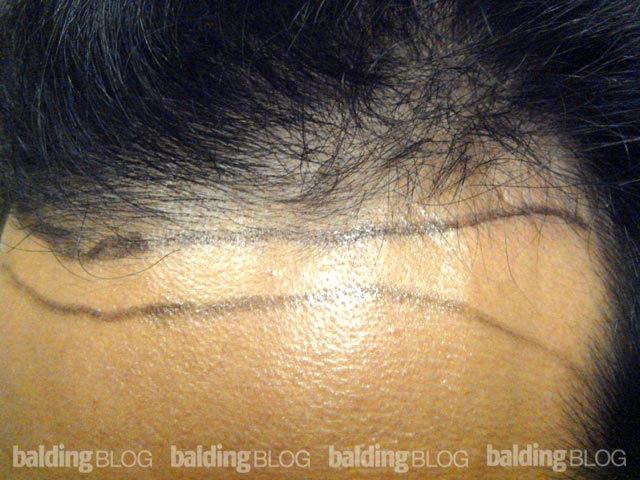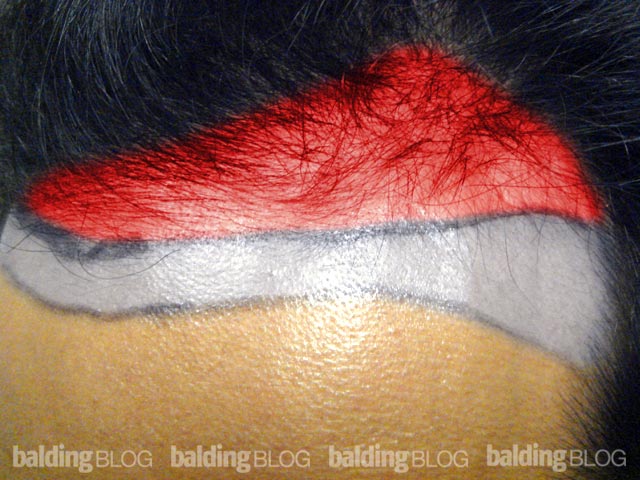2020-06-03 04:00:292020-06-01 03:48:01Another Patient from Turkey with 4000 Grafts (Photo)

Hi, I am 22, male and have been using hair straighteners for roughly a full year now. i have seen a decline in hair and hair thinning occur over the past 3 months. I am very concerned as i am soo young and not married and have already experienced hair loss, most likely due to traction alopecia. I am so styling my hair in this way and i hate to change and stop using my straighteners, but if my hair will grow back to its natural healthy and thick form it was in before i began using the straightening irons i will. So, if experienced significant hair lost by using straightening irons for one year, will my hair stop falling out and grow? And, will the hair that has fallen out be replaced? i know you have had similar questions, but most have been from females and i know alot of males that use such products and are having the same hair loss & thinning problem. we need to know if our hair will grow! PLEASE
Traction alopecia could be reversible if diagnosed early. If you are predisposed to male pattern baldness due to your genetic background, traction or any other type of trauma to your hair may have accelerated your approaching male pattern baldness. Occurrence of hair loss can be hastened by trauma. A visit to a hair specialist can help to determine whether your hair loss is an accelerated male pattern or purely traction alopecia. You should have your scalp mapped out for miniaturization to determine if you actually have genetic patterned hair loss. In either case, you need to stop what you are doing with your hair and let the hair follicles that are still alive grow new hair.
I understand that a 1mg dose of Propecia is recommended. What I want to know, however, is how much more hair grew at a 2mg dose vis-a-vis the 1mg dose — 10% more? 15% more? I know these data exist. So, what incremental improvement might there be with a 2mg dose?
While it’s quite possible that the data for 2mg finasteride hair loss treatment benefits exists, I don’t have it, I don’t recall seeing it, and I’m not sure if it was ever made available to the public.
I do know that there were studies that looked at high dose and low dose finasteride (prior to Propecia becoming available) for treating hair loss. More is not better and I am not aware of a 2mg study showing any additional benefit. The stories that I do hear are anecdotal.
2011-02-01 10:47:322011-01-28 09:19:26Any Data for 2mg Finasteride Benefits?
Comment by William Rassman, M.D.: I have been prescribing this drug for years. The problems that is discussed below have generally not been seen in most of my patients. Any drug, ANY DRUG, runs some risks when it impacts your body function like hormones, mood, etc… When you take any pill, you must recognize that this is a man made item and although the FDA may clear it for safety and effectiveness, there is no guarantee that you will not develop some unusual problem like the many discussed below by this very knowledgeable person. I felt that this comment was important to make. You should know that I am now taking finasteride and my son has been on it for 15 years and neither of us have seen any problems with this drug in our system.
The fact that this poison is still being regularly prescribed undermines the legitimacy and perceived objectivity of the American medical system and the pharmaceutical industry. There have been plenty of publications that have come out over the decade that have shown 5-alpha reductase inhibitors to be dangerous, even to those who appear to respond well to them, which I’ll link at the end of this comment. I am glad that the FDA was objective enough to deny the approval of these drugs as chemo-preventative therapies – who knows how many lives would’ve been destroyed if they’d been approved for that – and that they decided to finally label the drugs with serious warnings, but it’s not enough.
The risk of full-blown Post Finasteride Syndrome, while apparently low, is not something to dismiss. Additionally, the odds of developing side effects increases with time. These drugs have been shown to chronically lower neurosteroid levels, the most significant of which being allopregnanalone, which is responsible for anxiolytic, anti-depressant, pro-sexual, and other important effects. And as it turns out, DHT isn’t useless after puberty like many people seem to claim. There is no way to screen for who is at risk for post-5ARI syndrome and who isn’t. Even if the odds are low, you’re playing with fire. And many men who don’t develop the condition will still eventually have milder side effects, like a loss of morning erections, weaker erections, lower libido, increased anxiety or depression, etc. all to save a few thousand hair follicles. How do physicians justify this? It’s one thing to prescribe it for a hyperplastic prostate (and even that’s questionable), it’s quite another to prescribe it for vanity. Any physician that considers prescribing this drug for hair loss, as far as I’m concerned, should never be allowed practice medicine again, and should be sued for malpractice and negligence. Clearly they’ve never considered “first do no harm”.
Many physicians’ ignorance of what they’re prescribing is astounding, and the denial of a very real condition when it happens is, at the very least, cruel and pathetic. This sort of science-denial is akin to climate change “skeptics” or evolution deniers. I don’t think I need to explain why this is a terrifying trait to see in a licensed physician. The science is in and has been for years now.
https://www.ncbi.nlm.nih.gov/pmc/articles/PMC4064044/
https://www.sciencedirect.com/science/article/pii/S0960076017301024
https://www.ncbi.nlm.nih.gov/pubmed/28289563
https://link.springer.com/article/10.1007%2Fs11930-015-0061-y
There is a risk with any medication and Propecia (finasteride) is no exception. It is hard to surround the statistics on the permanent negative side effects reported here by this reader. Some say that the negative sexual side effects that are permanent are as frequent at 7,000 out of the millions of men taking the drug. That is a small number, but if you are one of them, it is 100% for you. Every medication has risks and I always inform my patients of these risks and never push any medication on them. Those men with great results from taking the drug will argue with this author, but everyone is empowered to make their own decisions once they know the facts.
Not every complaint about permanent sexual side effects are real. One of my patients took finasteride and reported impotence in 2 hours, before the drug peaked. Although I told him to stop the drug immediately, he refused and said he preferred impotence to hair loss. His call! Not what I would recommend.
2018-10-09 06:22:362019-03-11 20:15:24Man Warns Public About Propecia
“A photo of a patient with Aplasia Cutis Congenita. No treatments are being explored, but the presentation was unique, and in our own peculiar way, quite beautiful. I’ve never seen this presentation before, with so many hairs visible through translucent skin.” (Dr. Bob Haber)
This shows an amazing view of the anatomy of normal skin in the translucent area
What’s the Point?
For some years now, I have been advocating the use of video magnification for the purpose of:
The medical community has been less than enthusiastic about accepting this approach for reasons that I never have and still do not understand.
Do It Yourself!
People interested in getting this study have been unable to find cooperative doctors willing to make this service available and many doctors just laugh when they have been approached by blog readers asking to get the study done. Many doctors don’t even understand what it means to analyze the presence and degree of miniaturization. I have realized for some time that performing these determinations is not rocket science, so I have made the decision to enable those interested readers to perform their own miniaturization study. It requires an adequate video imaging system (a computerized version of my original U.S. Patent issued in 1994) which I’ve found available over the internet for under $100. For the informed patient who is interested in getting this analysis and can not find a doctor to do it, they can purchase the handheld unit from one of the sources referenced below and perform the testing themselves. The cost of the video imaging system is often less than the cost of the physician’s visit and it will allow the interested person to repeat the study yearly, accumulate a set of photographs of their balding area and compare the results over time. For those on medications like Propecia, it will enable the user to see if he is getting control of his hair loss over the course of 8-12 months.
Take a good look at the defined Norwood balding pattern classifications and you can clearly see that quantifying miniaturization in the areas of balding will give you a tool to determine just how far your balding might progress.
What Do I Buy?
The hardware required is a Celestron 44300 handheld digital microscope, and what I particularly like about this (aside from the sub-$100 cost) is that you can plug it into your computer’s USB slot to save the images in JPG format. That will make it easy for you to upload the saved images so that physicians can analyze the results. But I don’t want to get ahead of myself just yet (wait until Monday)! This microscope works for both Windows and Mac computers. I’ll be providing a tutorial video next week on our new sister site, BaldingForum.com, that will show you how to use this microscope and how to map your scalp.
Here are some sites that sell the microscope; I have no preference of which site you purchase from:
2008-11-14 15:30:162008-11-21 10:39:31Mapping Your Own Scalp for Miniaturization, Part 1
I used to be able to grow a full beard. Now there are patches over my face where absoultely no hair grows. Is this related to monoxidil use on my head? Or could this be from something
else?
No, it is likely from something unrelated. Minoxidil on the scalp does not cause you to lose hair elsewhere on your body.
Im 20 years old and I am noticing my hair thinning on both the front left and front right sides of my head. Receding hair does exist in my family, however, for a while I had been excessively masturbating. This may have also been a cause, so Ive heard. What do you think? Is it possible for my hair to grow back thicker? And what would be the best thing for me to do?
Thinning hair does come from family genetics and I gather from your question that you have the genetics in your family history, which may point to the most probable cause of your hair loss. Genetic hair loss is caused by the interaction between your genes, your testosterone (and DHT levels), time, and stress. The young man has a great deal of circulating testosterone (which creates DHT, which causes hair loss and thinning on the negative side and hair growth in beard, chest hair, and hair almost everywhere else on the body, except the scalp). Because testosterone levels are high, the sex drive in young men is also very high. Frequent erections (in some teenage boys as many as 20 times per hour in some situations) produce a desire to masturbate (when the opportunity is right) to relieve the sexual drive. High testosterone levels and the desire to masturbate are a perfectly normal response to both your erections and the hormone levels driving them. As a culture, we hide our masturbating with some shame but the process is a normal process.
Your frequency of masturbation will not impact your hair loss; only things like genetics, hormones and hormone blocking agents like Propecia will impact your hair loss/thinning. You should have your scalp evaluated for miniaturization and balding patterns. If you do have genetic hair loss, you should get on the appropriate treatment (like Propecia), for if you do not treat it, the family pattern may prevail. It is said that men who are bald, are more sexually active than hairy men. I do not know if this is correct or not or if that means that bald men try harder. There are better statistics for hair loss than the masturbating habits of young, balding men. I would suggest that you masturbate all you want, just focus upon getting your hair diagnosis and treatment going in the right direction by taking action, rather than ignoring the proper approach to your problem. Keep hair loss and your penis agenda separate and give both, the attention they need. If you are able to come to Los Angeles, visit me and I would be happy to evaluate your hair loss and recommend the appropriate treatment for you.
2006-01-03 16:12:192006-01-11 09:05:41Masturbation and Hair Loss
I am a pharmacist and I think someone is “playing” me to get some finasteride. He got #60 5mg tabs yesterday (a Saturday) and told me this morning that a hotel maid threw them away when she cleaned his room. I do not know the patient; he has traveled here for work. He is young and told me that he cuts the 5mg in quarters for hair loss. I told him I would contact his MD Monday morning. This bugged me all day and I can’t find much about finasteride abuse but none of it is sitting right with me.
I saw this page on your site (The Impact of Higher Doses of Propecia). Are people abusing finasteride? I don’t really want to provide this guy with more finasteride, even if I get a new prescription from his physician. I’d appreciate your help.
You may be right, and the lost prescription may be a ‘tool’ for supplying his friends with the drug. Or it could just be that a hotel maid threw out his pills. This is a judgment call for you as a pharmacist and for his doctor who would know him better.
Finasteride is not an addictive painkiller or something like that which tends to be abused.
Normal male hairline progression from a juvenile to a mature one typically occurs between 17 and 29 years of age. The lowest line in the photo below is the hairline this man had when he was about 12 years old. The second line is the hairline that will be his mature hairline if he is not balding. The area behind this second line has miniaturizing hairs and it should be his permanent hair, so this man is clearly developing frontal balding. This process of a maturing hairline might appear like balding to the person impacted by this change, but it is self limited and stops within a few years once the location of the maturing hairline is established. Many of my readers think that the development of a mature hairline is balding (they panic but should not because it is not balding). Performing a miniaturization study at the stage where the maturing hairline is starting to develop would show miniaturization (in only the blue area). In this patient the blue area is completely hair free. Behind the blue area, there should be no miniaturization (not the case in the photos here). I call the entire area we are looking at in the photos, the frontal hairline, not the temples (as so many of my young readers call it). Although the average age of a maturing hairline appears between ages 17 to 29, it could be seen before 17 or after 29.
If this man wanted a hair transplant, I would put him on Propecia (finasteride 1mg) to stabilize his progressive hair loss and then transplant him (about 1300 grafts). One might think that the proposed transplanted area would be easy to see, but he has enough hair to hide any transplant he would get with some creative forward combing style. The balding on the right side is as extensive as the balding on the left side, but the way the hair is styled, it hides the balding well. I would place his hairline just where the blue area starts and give him what he would have had if he was not balding. The entire red area would be filled with transplanted hair.
So just to summarize, these photographs are of a 31 year old patient with early hair loss beyond his mature hairline. The lowest line is the location of his juvenile hairline and the upper is the location of where his mature hairline would be (usually about 1/2 inch above the juvenile hairline in the midline and an inch in the corner of the frontal hairline). I’ve put up the original version and a color-highlighted version to show the areas I’m referring to. The blue section in the colored photos is the area between the juvenile and mature hairline, and the red section is the actual genetic hair loss which has miniaturized hair (behind the mature hairline). Please click the photos to enlarge.



